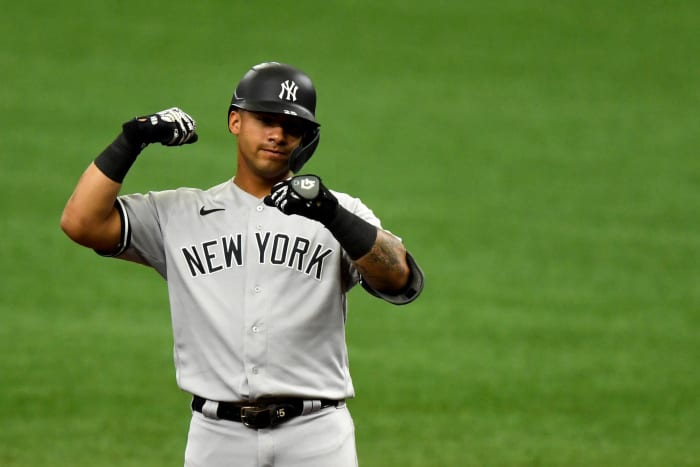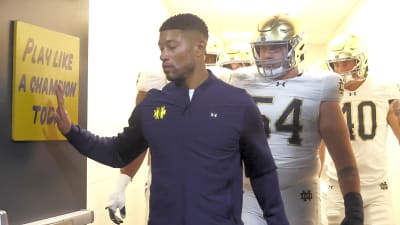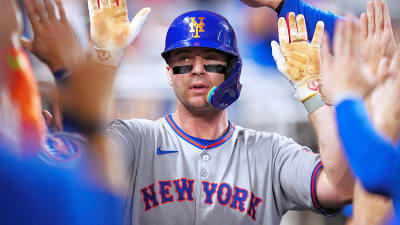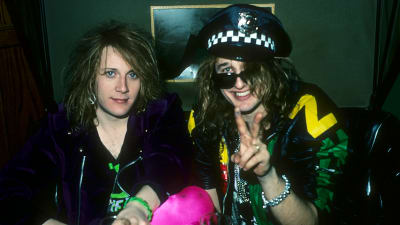MLB teams always have big decisions to make at the trade deadline that could alter their franchises for the short and long term. These 25 deadline trades from past years stand out as the biggest and best moves in deadline history.
1 of 26
The 25 best MLB trade deadline deals
Douglas DeFelice/USA Today Images
With the MLB trade deadline just around the corner, on August 31, teams have big decisions to make that could alter their franchises for the short and long term. These 25 deadline trades from past years stand out as the biggest and best moves in deadline history.
2 of 26
1988: Orioles acquire Curt Schilling and Brady Anderson from the Red Sox for Mike Boddicker
Ronald C. Modra / Getty Images
Bound for the playoffs, Boston traded two promising prospects in Schilling and Anderson for Boddicker. Boddicker certainly did his job after being acquired, posting a 2.63 ERA in 89 innings, almost all as a starter, and then throwing more than 200 innings in each of the next two seasons. However, the O's got more than fair value in the deal, as Schilling blossomed into one of the game's best pitchers (albeit many years down the road with other teams), and Anderson played 14 seasons with Baltimore, making three All-Star appearances and hitting 50 home runs in 1996.
3 of 26
1993: Braves acquire Fred McGriff from the Padres for prospects
John Cordes / Icon Sportswire
San Diego traded McGriff to Atlanta in 1993 for Vince Moore, Donnie Elliott and Melvin Nieves. The first baseman would play five seasons with the Braves, making three All-Star appearances and contributing to their historic '90s run of success. The only notable player the Braves traded was Nieves, who hit 20-plus home runs twice after going to Minnesota.
4 of 26
1996: Mariners acquire Jamie Moyer from the Red Sox for Darren Bragg
Jesse Beals / Icon Sportswire
Boston didn't think it was giving up much when it traded a 33-year-old left-handed swingman to the M's for Bragg. As it turns out, Moyer would emerge as a staple on some good Mariners teams well into his 40s, pitching 11 seasons with Seattle. He made 323 starts with Seattle, winning 145 games and posting a 3.97 ERA. Bragg appeared in three major league seasons with Boston and was a bench player for most of his career.
5 of 26
1997: Red Sox acquire Derek Lowe and Jason Varitek from the Mariners for Heathcliff Slocumb
Ray Carlin / Icon Sportswire
It seems unlikely Boston would have broken the curse and won the World Series in 2004 without this trade. The Red Sox took advantage of Seattle's desperation for a reliever by acquiring Lowe and Varitek. Lowe made two All-Star appearances in eight seasons with the Red Sox and was a key member of the team's 2004 World Series run. Varitek eventually became team captain and had 15 productive seasons behind the plate with three All-Star appearances. Slocumb had a 5.79 ERA at the time of the trade but did pitch a bit better after the deal as Seattle's closer. He stuck around Seattle for one more season, with a 5.32 ERA in 1998.
6 of 26
1997: Cardinals acquire Mark McGwire from the Athletics for prospects
Cliff Welch / Icon Sportswire
While the Cardinals didn't have great on-field success after acquiring McGwire from Oakland in 1997, the move certainly resulted in monetary success. St. Louis traded reliever T.J. Mathews and two prospects to the A's for McGwire at the deadline, and none of that trio made a significant impact on the field for Oakland. Meanwhile, McGwire re-signed with the Cardinals and had a historic, record-breaking 70 home run season in 1998, followed by 65 more home runs in 1999. McGwire retired following the 2001 season and although it could be said that his success was helped by PEDs, he still created memories that baseball fans will never forget.
7 of 26
1998: Reds acquire Paul Konerko from the Dodgers for Jeff Shaw
Donald Miralle / Getty Images
One of the game's top closers, Shaw was shipped to the Dodgers at the 1998 deadline for two promising prospects. Shaw was a solid closer in L.A. for the next few years, but the cost was great. Konerko briefly played for the Reds before he was traded to the White Sox for Mike Cameron after the 1998 season, and he went on to have a tremendous career with 439 home runs and six All-Star appearances. Cameron was a good player in his own right over 17 seasons but spent only one season in Cincinnati before getting traded to Seattle in the Ken Griffey Jr. deal.
8 of 26
2000: Diamondbacks acquire Curt Schilling from the Phillies for four players
Dilip Vishwanat / TSN / Icon Sportswire
Arizona shipped a package of four players to Philadelphia for Schilling in 2000. Although the package was productive for the Phils, including Omar Daal, Travis Lee, and Vicente Padilla, Schilling joined Randy Johnson to win the World Series for the Diamondbacks in 2001. During 2001 and 2002 in Arizona, Schilling finished second in the NL Cy Young voting, averaging 258 innings and winning a total of 45 games.
9 of 26
2000: Rangers acquire Michael Young from the Blue Jays for Esteban Loaiza
Mark LoMoglio / Icon Sportswire
Young wasn't thought of as a top prospect when the Rangers netted him for Loaiza in 2000. He emerged as one of the game's best hitters during his career, making seven All-Star appearances and leading the league in hits twice. Young hit .300 for his career over 14 seasons and also hit more than 20 home runs four times. Loaiza did pitch well for Toronto in 2000 (3.62 ERA in 14 starts) but struggled in the Jays rotation the following two seasons.
Elsa / Getty Images
If not the best, Theo Epstein's trade that sent franchise player Nomar Garciaparra packing for Cabrera and Mientkiewicz was certainly his gutsiest. The move vastly improved Boston's defense at shortstop and first base en route to breaking its World Series drought in 2004. Garciaparra was in Chicago through 2005 before going to the Dodgers.
11 of 26
2007: Rangers acquire four prospects from the Braves for Mark Teixeira
Kim Klement / USA Today Sports Images
Teixeira was a tremendous player for the Rangers over four-plus seasons, hitting 30-plus home runs four times, but the haul Texas received from Atlanta was franchise-altering. Texas got Elvis Andrus, Neftali Feliz, Matt Harrison, Jarrod Saltalamacchia, and Beau Jones for Teixeira and Ron Mahay. The group helped the Rangers advance to two World Series, and Andrus remains in Texas as one of its all-time best players.
12 of 26
2008: Angels acquire Mark Teixeira from the Braves for Casey Kotchman
Brian Jenkins / Icon Sportswire
The Angels tried to make a playoff run in 2008, acquiring Teixeira from the Braves for pennies on the dollar after the Braves moved a group of elite prospects to get Big Tex the previous year. They moved Casey Kotchman and Stephen Marek to acquire Teixeira. Once an elite prospect, Kotchman continued to disappoint in Atlanta, posting a .724 OPS over two seasons, while Teixeira hit .358-13-43 in 54 games and continued his hot hitting in the playoffs before becoming a free agent.
13 of 26
2008: Brewers acquire CC Sabathia from the Indians for four prospects
Warren Wimmer / Chicago Sports Rev / Icon Sportswire
The Brewers went all in when they were in playoff contention in 2008, trading prospects Rob Bryson, Zach Jackson, Matt LaPorta and Michael Brantley to Cleveland for Sabathia. The left-handed ace was tremendous down the stretch for the Brewers, going 11-2 with a 1.65 ERA in 17 starts with seven complete games. Of the prospects Milwaukee traded, only Brantley panned out.
14 of 26
2009: Blue Jays acquire Edwin Encarnacion and prospects from the Reds for Scott Rolen
Bob DeChiara / USA Today Sports Images
Reds GM Walt Jocketty had a history with Rolen in St. Louis, so he spent big to acquire the 34-year-old third baseman, sending Encarnacion and two prospects to Toronto. Rolen had one good season in Cincinnati, while Encarnacion became one of the game's top power hitters north of the border. During parts of eight seasons in Toronto, Encarnacion hit 239 home runs and launched at least 34 home runs in five straight seasons with the team.
15 of 26
2009: Cardinals acquire Matt Holliday from the Athletics for prospects
Benny Sieu / USA Today Sports Images
Oakland's offseason acquisition of Holliday from Colorado didn't work out, so the team traded the outfielder at the deadline as he headed toward free agency. None of the three prospects Oakland received in the deal did much in the majors, but Holliday became a franchise player in St. Louis over the next eight seasons with four All-Star appearances and one World Series title.
16 of 26
2010: Indians acquire Corey Kluber from the Padres for Jake Westbrook
Jasen Vinlove / USA Today Sports Images
Cleveland traded starter Jake Westbrook in a three-team deal, netting them a former fourth-round pick in Kluber. Kluber eventually became an ace for the Indians a few years later, winning the AL Cy Young in 2014 and 2017.
Kim Klement / USA Today Sports Images
Uehara was a dominant reliever for two years in Baltimore leading up to his trade to Texas. He continued to pitch well, but Baltimore's acquisition of Davis and Hunter set them up to compete for the next few years. Hunter was a solid reliever for the Orioles, while Davis led the AL in home runs in 2013 and 2015.
18 of 26
2012: Cubs acquire Kyle Hendricks from the Rangers for Ryan Dempster
Charles LeClaire / USA Today Sports Images
The Cubs traded the 35-year-old Dempster to Texas for a middling pitching prospect in 2012 as they continued their rebuild. Dempster had a 2.25 ERA in 16 starts before the trade but was terrible in Texas, posting a 5.09 ERA in 12 starts. Hendricks arrived to the majors two years after the trade and was much better than expected, posting a 3.11 ERA over 150 starts over his first six MLB seasons despite sub-par velocity.
Jim Young / USA Today Sports Images
Baltimore was willing to give up two pitchers who weren't fulfilling expectations for one having a career year in Feldman. Feldman closed out the regular season with a 4.27 ERA in 15 starts, but Baltimore likely regretted the move after what Arrieta and Strop produced in Chicago. Arrieta became an ace the following year and won the NL Cy Young in 2015. He had a remarkable 2.73 ERA in 128 starts with the Cubs. Strop is still going strong in the Cubs pen, with a 2.78 ERA and 28 saves in 390 appearances over seven seasons.
20 of 26
2015: Royals acquire Johnny Cueto from the Reds for prospects
Denny Medley / USA Today Sports Images
The Royals made their second consecutive playoff run in 2015, this time acquiring Cueto for the stretch run in his walk year for young pitchers Brandon Finnegan, John Lamb, and Cody Reed. Cueto struggled in 13 regular-season starts but came up big in the playoffs, including a complete game win in the World Series. None of the pitchers K.C. traded has panned out yet.
21 of 26
2015: Dodgers acquire Alex Wood and six other players from the Braves for Hector Olivera and prospects
Jerry Lai / USA Today Sports Images
The Dodgers pulled off an unbelievable heist in 2015 in a trade that also involved Atlanta and Miami. Going to L.A. were Alex Wood, Jose Peraza, Jim Johnson, Luis Avilan, Bronson Arroyo, Mat Latos and Mike Morse. None of the prospects the Dodgers traded has done much, and Olivera's MLB career effectively ended after he got into trouble off the field. Wood pitched like an ace at times for LA from 2015-2018, while Avilan was also a productive part of their bullpen.
22 of 26
2016: Yankees acquire Gleyber Torres and prospects from the Cubs for Aroldis Chapman
Brad Penner / USA Today Sports Images
With Aroldis Chapman headed toward free agency, the Yankees cashed in by acquiring arguably the best shortstop prospect in the game from the Cubs in Torres. Torres has been exactly as advertised, making the AL All-Star team in each of his first two seasons. Chapman helped the Cubs win the World Series before returning to the Yankees on a five-year, $86 million deal in the offseason.
Dennis Wierzbicki / USA Today Sports Images
Melancon established himself as one of the best closers in the game, but the Pirates played the long game with his pending free agency and cashed in at the trade deadline. In return, Pittsburgh received a struggling young reliever in Rivero (later now as Felipe Vazquez) who emerged as the team's closer just one year later. He was an elite closer until he had major legal problems in 2019. Hearn also became one of Pittsburgh's best pitching prospects before getting shipped to Texas in 2018 for Keone Kela.
24 of 26
2017: White Sox acquire Eloy Jimenez, Dylan Cease and two other prospects from the Cubs for Jose Quintana
Jon Durr / USA Today Sports Images
The White Sox cashed in on the desperation of their North Side rivals at the deadline in 2017, acquiring the Cubs' top two prospects for Quintana. The jury is still out on the deal, but both Jimenez and Cease have already made waves for the White Sox since their 2019 arrivals. On the other hand, Quintana has been a bit of a disappointment for the Cubs, with a 4.23 ERA over his first 78 appearances (77 starts).
Kim Klement / USA Today Sports Images
It was unclear if the Rays would finally trade Archer in 2018, with at least one more year of team control remaining and still sporting a competitive squad. They were apparently blown away by the Pirates offer, getting two of Pittsburgh's most talented young players and its 2017 first-round pick. Glasnow and Meadows have been even better than hoped since the deal. Glasnow was dominant in 2019 as a starter, while Meadows was an All-Star. Archer has floundered in Pittsburgh and suffered a major injury that has sidelined him for all of 2020.
26 of 26
2018: Astros acquire Ryan Pressly from the Twins for two prospects
Raymond Carlin III / USA Today Sports Images
Houston has had a way with pitching and has transformed Pressly into one of the most dominant relievers in the game since acquiring him for two mediocre prospects. Pressly was dominant in his first two years in Houston and also set the record for consecutive scoreless appearances in the process.
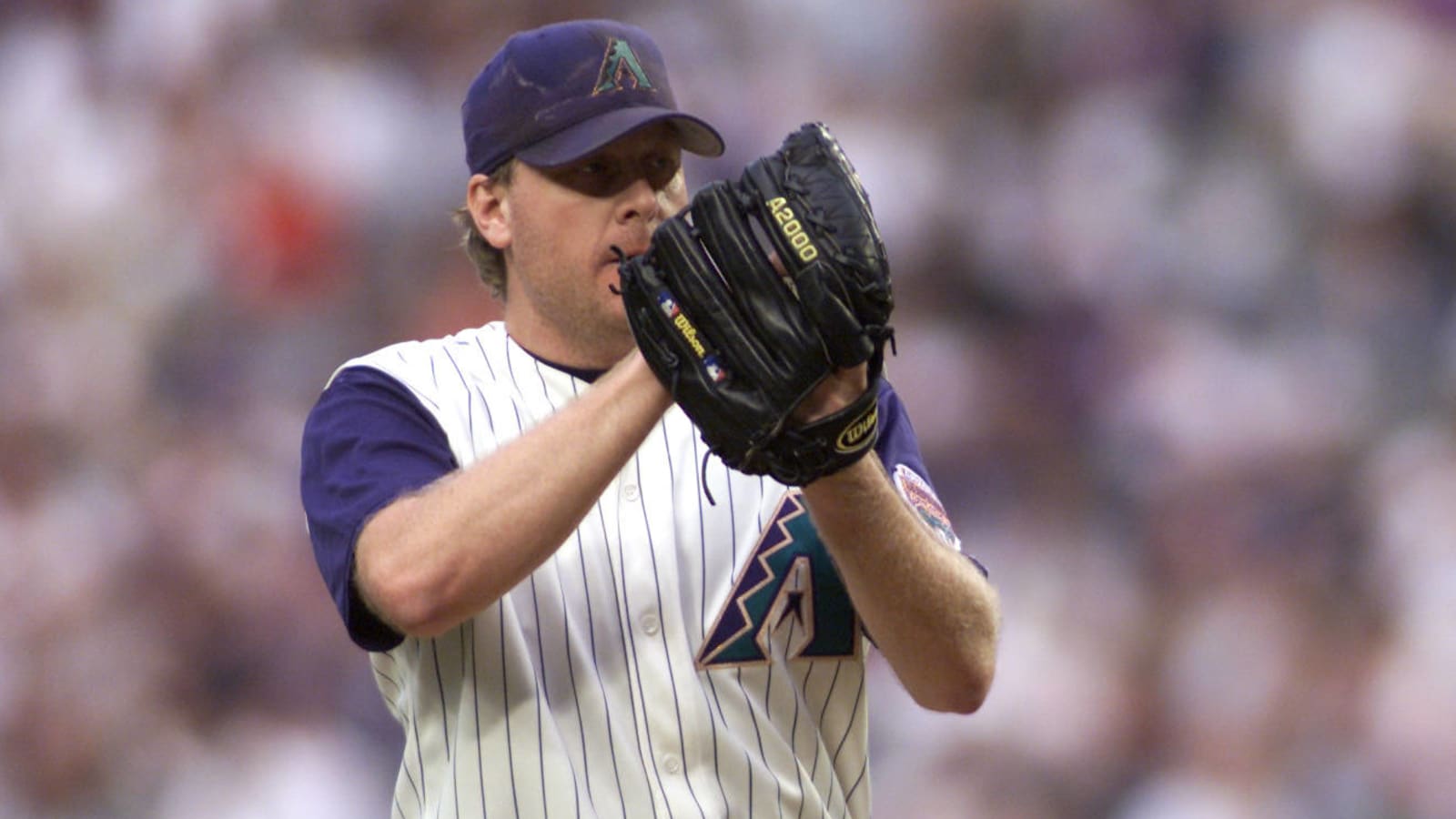
 +
+
